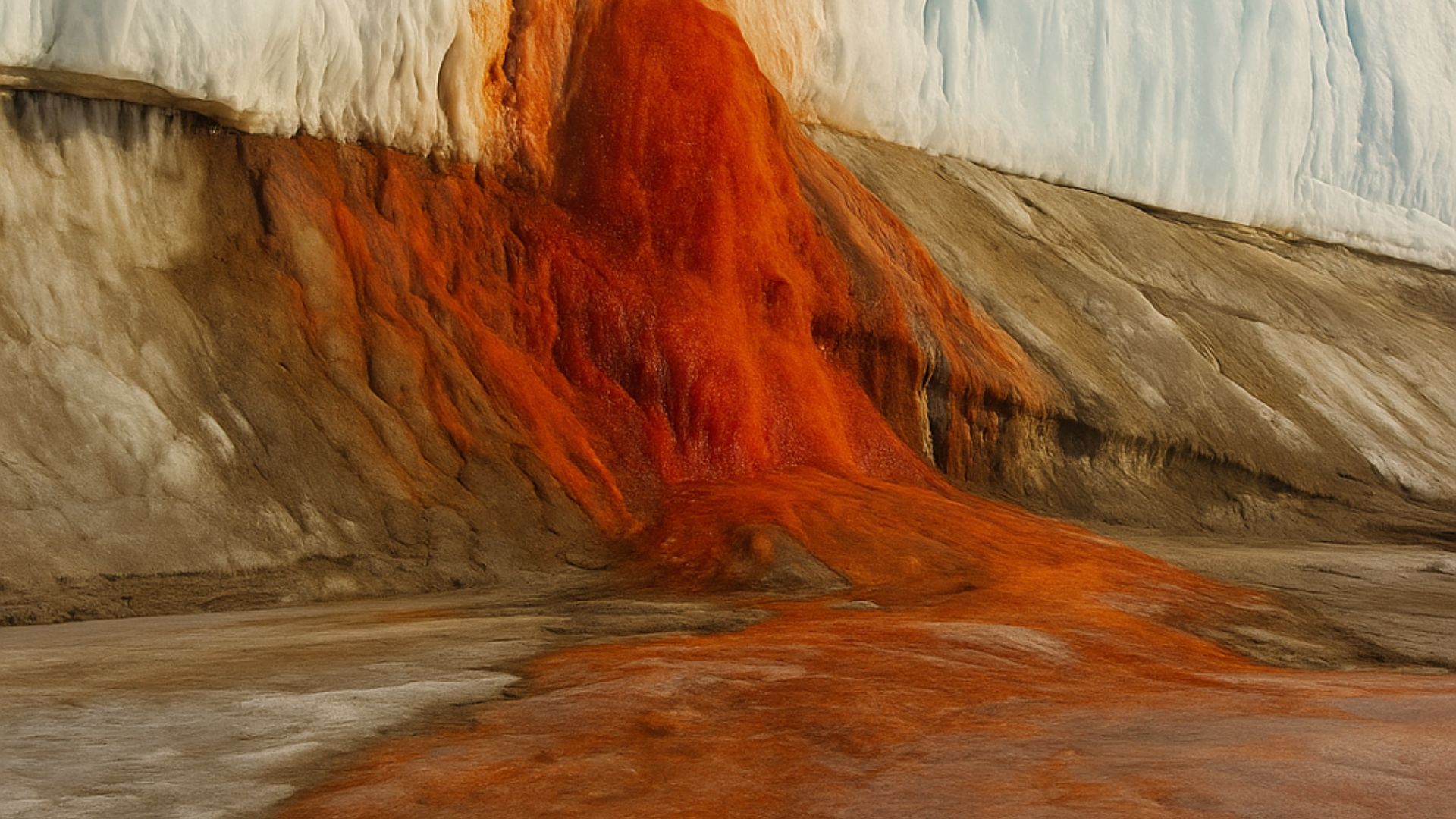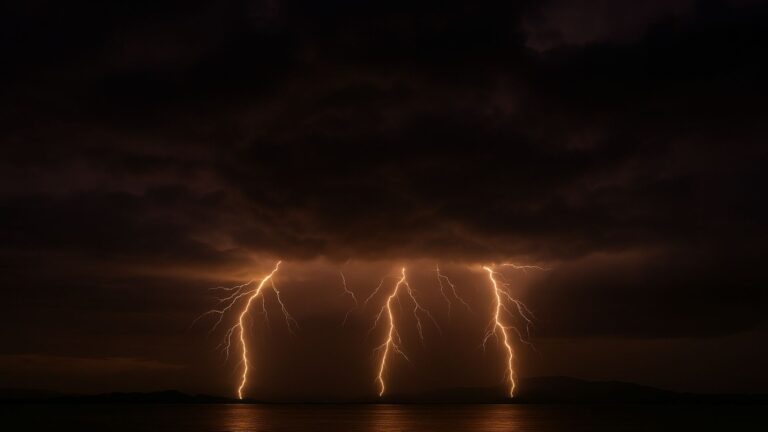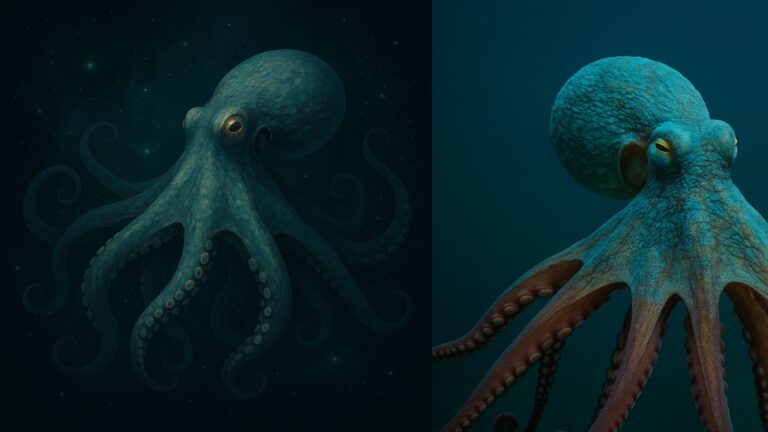Blood Falls in Antarctica — The Glacier That Bleeds Red
At first glance, it looks like Antarctica itself is bleeding. Deep within the icy vastness of East Antarctica, a five-story-high waterfall pours out of the Taylor Glacier — and it’s blood red.
But this strange phenomenon isn’t a horror movie effect. It’s real, it’s natural, and it’s known as Blood Falls in Antarctica.
🔬 Blood Falls in Antarctica —Why Is It Red?
The vivid red color comes from iron-rich water that’s been trapped beneath the glacier for over 2 million years.
Here’s how it works:
- The trapped water contains a high concentration of iron and salt.
- As it leaks out and is exposed to oxygen, the iron oxidizes — like rust on metal — turning the water deep red.
- This rusty water pours down the ice, creating the stunning visual known as Blood Falls in Antarctica.
🧪 What’s Under the Glacier?
What makes this phenomenon even weirder is what lies beneath:
- Scientists found a subglacial lake sealed off from light and air for millions of years.
- Microbes living in this lake survive without sunlight, oxygen, or external energy sources.
- These are some of the oldest, most primitive life forms on Earth — feeding off sulfates and iron instead of photosynthesis.
“It’s like an alien ecosystem trapped under ice,” say researchers from the University of Alaska.
🧭 Where Is Blood Falls?
- 📍 Located in McMurdo Dry Valleys, East Antarctica
- Part of Taylor Glacier
- Near Lake Bonney in the Victoria Land region
It’s one of the few parts of Antarctica that remains largely free of snow, thanks to its extreme cold and dry conditions.
Must Rad: “There’s a Hole in the Earth That Scientists Still Can’t Explain”
🌍 Why Blood Falls Matters
Blood Falls in Antarctica isn’t just a strange photo opportunity. It’s scientifically valuable because:
- It proves that life can survive in extreme, oxygen-free environments.
- It offers clues for extraterrestrial life — especially on icy moons like Europa and Enceladus.
- It’s helping scientists understand subglacial ecosystems that could affect Earth’s climate models.
📸 Fun Fact
Despite being called a “waterfall,” the flow is very slow — only a few drops per minute. But thanks to its dramatic red color, it still makes a huge impact.







